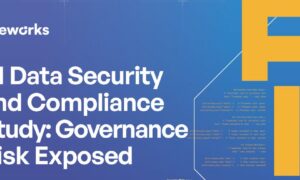A corporate merger or acquisition may significantly alter a company’s long-term perspective and potential for growth. However, despite the fact that an acquisition can revolutionize the acquiring company in a matter of hours, there is a substantial amount of risk involved.
There are important elements to take into account when it comes to mergers and acquisitions. The most effective managers and strategists are able to identify the main dangers of development and change, as well as the crucial inquiries to make as they guide their teams and companies to accomplishment.
When undertaking M&A insights, leadership teams often need to pay more attention to the magnitude, scope, and change implications of the integration and the degree of assimilation necessary across the impacted departments, divisions, subsidiaries, and leadership teams.
Although these concerns are significant in all mergers and acquisitions (M&A), they are particularly crucial when the M&A involves businesses with distinct industry sectors or geographic concentrations.
Stakeholders can access various documents linked to a transaction in a data room. Virtual data rooms are a repository of documents that is accessible online and has security, access control, and other tools and resources to assist the transaction.
How Does Risk Management for Mergers and Acquisitions Work?
Let’s define what tools can help us with risk management. The commercial side of risk management is fundamentally unpredictable. Although it’s tough to forecast what will happen next, you can better understand your company’s trajectory based on the information you now have.
There are always some risks associated with running a business, even though the risk varies depending on the sector and the company’s size. While financial risk typically tops the list of concerns for businesses, other types of risk can be just as detrimental to the entity.
Data room M&A is a safe online document storage and management system where all the papers connected with a merger or acquisition transaction are kept until the deal is finalized.
The purchasing business will require a simple and user-friendly method to analyze all the pertinent documents that provide a comprehensive picture of the target company’s financial and operational state. The target company’s presentation of the documents and the purchasing company’s evaluation of those documents support the decision to proceed with the deal.
There are issues with the law, competition, reputation, and regulations. In the past, one or more people were in charge of recognizing, assessing, and managing potential losses as part of risk management. This was a job that required constant vigilance in order to recognize potential warning signs and respond appropriately.
These days, the phrase “enterprise risk management” is widely used to refer to a company’s active development of disaster plans and examination of its roadmaps, and selection of the least risky routes.
It’s critical to remember that even with the best risk management tools available, you’re still susceptible to the unpredictability of the outside world.
The Risks of Mergers and Acquisitions
The actualization of the mergers and acquisitions risks results in overvaluation, excess payment, a negative balance in the books, irrational financial assumptions, and a failure to materialize synergies due to poor integration.
Despite the fact that mergers and acquisitions might result in fantastic growth possibilities, they can also have significant negative effects on the parties involved. Check below post merger integration checklist to know all the key risks.
Risk 1: Poor Due Diligence
What it Means
Due diligence is essential for all mergers & acquisitions. It allows the acquiring company to discover important facts about the seller.
Additionally, the acquirer is able to modify its expectations, make informed decisions during negotiations. The buyer might refrain from entering dangerous and potentially disastrous business deals or decrease the danger of having any legal or financial issues.
Risks
Poor due diligence might result in significant issues. For starters, it might lead to low worth. Appraisal procedure is a very important step for the buyer and seller. It helps to reach an understanding of a purchase price.
Avoiding overestimation of synergies:
Calculating synergies is the most important thing you can do when considering deal. Instruments for detecting synergies include M&A project management systems and valuation spreadsheets.
Once you’ve calculated the synergies, you should divide that figure by two in order to retain a cautious estimate of the synergies in the deal.
Risk Reduction Techniques
The right due diligence is essential for any M&A transaction. A knowledgeable team with experience in business, law, finance, and the industry must be assembled by the buyer early in the process. In order for the acquirer to ask the relevant questions throughout the procedure, that team must develop a master due diligence request list.
Risk 2: Integration Deficits (risk of M&A integration)
From mergers and acquisitions news we can agree that post-merger integration is the trickiest part of any transaction.
Internal management audits and Salesforce integration are only two of the many issues that need to be resolved since they pose serious risks, the possibility of employee unrest, an inability to realize synergies, and ultimately a loss of value.
Integrations are made even more difficult by the fact that the most important factor to include, culture, is often obscure after a period of time. When all of these elements are taken into account, it is simple to understand why the integration process has such a high risk.
How to Avoid Common M&A Integration Gaps:
Having members of the due diligence team join the integration team is the first obvious step toward better integration processes. Less duplication of effort and activities results from this consistency assurance and information streamlining.
The team should include members with good IMO and project management skills. Last but not least, you should include a member of HR on your integration team, preferably from the organizational development division.
A keen eye on integration planning may be observed during diligence when new information and a deeper understanding of the target firm are discovered if an experienced and skilled integration team is in place from the beginning of the transaction.
Risk 3: Inadequate culture and change management
Related to integration strategies is the need to take business culture into account, provide new hires the tools they need to succeed, and treat them like vital contributors to the team.
Employers aid firms in achieving objectives, generating revenue, capturing synergies, and fostering innovation. People are the most important assets for successful acquirers.
How to Avoid the Negative Cultural Effects of Mergers and Acquisitions
In the early stages of a negotiation, when the buyer is unaware of certain facts, observations during onsite visits, research on how the target communicates about management styles and procedures, or one-on-one encounters can sometimes be conducted.
In a perfect scenario, the buy-side would have a team or specialist dedicated to change management who would be in charge of gathering this information.
As the deal progresses and more information regarding culture is gathered, the change management team can assess the differences between the buy-side and sell-side that could jeopardize or even end the agreement. The change management team can use this information to prevent these risks.



































